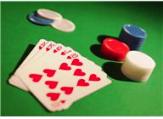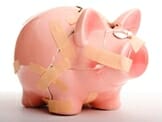I wish I could tell you – I mean REALLY help you understand – about manic bipolar.
Mania is what differentiates bipolar disorder from depression. Getting manic is also the key difference between Bipolar 1 and Bipolar 2. (In Bipolar Type II people are merely hypomanic, not “full-on” manic.)
What is bipolar mania?

According to AstraZeneca, producer of a leading unipolar medication:
“Bipolar mania is an extremely high mood. During a manic high, people feel unusually great. It’s common to be overly talkative, have lots of energy, and need little sleep.”
The problem with this description is that bipolar mania is portrayed simply as feeling “high”,having lots of energy, talking a lot, or needing little sleep.
After all, everybody likes to be in a good mood, even to the point of being “up” “hyper”, or “high”. Colors look brighter. Music sounds sweeter. “Laugh and the world laughs with you” so everyone wants to be your
friend and hang out with you.
But talk about too much of a good thing. The “high” of a manic episode will all too often lead to tragedy in the end.
It is also important to understand that mania is not always a feeling of euphoria. It comes in the form of agitation, extreme anger or even confused thinking and delusions to the point of psychosis.
This more nuanced and thorough description of mania from The Black Dog, a leading psychiatric research institute is much more informative and useful: Mania in Bipolar Defined.
Reminder
The best way to manage a manic episode is to avoid it.
As you can see, throw in irritability, anger, inappropriate behavior, and some delusions or hallucinations and manic bipolar sounds a lot less fun!
The most typical ways manic bipolar expresses itself are impulsive and risky behaviors:

- driving too fast
- substance abuse
- spending sprees
- gambling
- promiscuous and unusual or “hyper” sexual behavior
- risky, ill-founded business ventures or “investments”.
This type of uncontrolled mania is the benchmark symptom of a bipolar disorder. Some people with bipolar disorder describe it as feeling like being in a fast car with the brakes failing. (And of course you feel as if you cannot stop and probably don’t want to.)

In the irrational experience of a manic bipolar episode, you can lose all sight of reality. You do not think about how you will feel when the binge is over. All you can think about is how you feel at the moment. You don’t care that you have drained your bank account and the mortgage payment is due on Monday. You don’t think twice about letting your drunken friend borrow your brand new car (or of getting behind the wheel yourself). You don’t even care about losing that promotion you have worked so hard for.
Sometimes, when treatment is successful, some of us may even end up missing bipolar mania because of some of the seemingly ‘good feelings’ and higher functioning (compared to episodes of depression) that come from manic episodes.
The best way to manage a manic episode is to avoid it
This means developing an understanding of the following:

1. The warning signs of an impending manic episode.
2. WHY you MUST control a manic episode.
3. HOW to MANAGE a manic episode.
We all experience warning signs of an oncoming episode. These can be subtle and vary for each individual. Common ones are becoming irritable and having disrupted sleep patterns. These warning signs are called prodromes.
It is at this stage that steps MUST be taken to maintain a level mood. I have a Wellness Plan and a Treatment Contract with my spouse.
When we see the beginning warning signs of manic bipolar I see my psychiatrist to discuss medication adjustments and hand over my ATM and credit cards to my spouse.

Also I avoid driving, focus on getting back into a healthy sleep schedule, abstain from alcohol, keep away from shops, and create a quiet and non-stimulating space.
I like to pray and read scripture but this activity may vary depending on your own faith tradition. My emphasis is on maintaining a routine and making sure i don’t do anything without discussing it with my Wellness Team.
My mantra at these times is constant reminders to myself of “Slow – Not GO!”
Remember, those close to you may see the red flags of manic bipolar long before you will. Listen to them and avoid becoming defensive or taking things personally, as this hypersensitivity may also be a sign of oncoming mania. Your loved ones are only trying to help.
Notice that to meet the definition of a manic episode, your bipolar symptoms must be expressed as bipolar behavior – real world actions that have adverse and measurable consequences
Treating bipolar mania
Bipolar mania treatment may be quite different from treating bipolar depression. Treating mania is usually also quite different from maintenance treatment for bipolar disorder.
You and your doctor MUST BOTH understand the phases of bipolar disorder and the appropriate treatments for each phase.
KEY TAKEAWAY: An episode of acute mania may require different treatment than an episode of acute depression. Further, once mood is stable, maintenance treatment may be different again.
The bipolar medications used to relieve depression can make bipolar mania worse.
REPEAT: To effectively treat a manic episode, both you and your doctor will need to clearly understand what type of bipolar disorder you have, and exactly where your mood is at the time of treatment.
Don’t worry. This is not as difficult as it might sound.
Treating mania with bipolar medications
Therapy, diet and lifestyle are all critical but the first choice treatment for both bipolar mania and bipolar depression is still medication.
To date there is no known alternative to drugs for effective bipolar mania treatment. The mainstay is mood stabilizing meds such as lithium. However, recently certain so-called “atypical antipsychotics” have been approved by the FDA for treating bipolar disorder.
Why has the FDA approved these new drugs? Well rest assured! Approving new bipolar drug treatments is not something the FDA does lightly. These drugs have proven results from rigorous clinical trials. There are also more anti-convulsants approved for treating bipolar.
More medication options means great progress for Bipolar treatment, but it also leads to confusion as, unlike lithium which treats both bipolar mania and depression and is also an effective maintenance treatment, some of these drugs treat ONLY bipolar depression or ONLY MANIA.
Treatment Guidelines
Treatment “guidelines”, also known as “bipolar treatment algorithms” are a set of rules that provide a defined process to apply in prescribing drug treatment. These clearly defined instruction are developed to standardize treatment and ensure all patients benefit from recognized “best practice”.

Some well known bipolar treatment guidelines have been published by the American Psychiatric Association (APA), the Department of Veterans Affairs (VA), the Expert Consensus Guidelines from the Tri-University Project, and the Texas Medication Algorithm Project ” or TMAP from the Texas Department of Mental Health and Mental Retardation.
Bipolar mania treatment is pretty uniform across all the guidelines and usually goes as follows:
1. Start with lithium. Also accepted but less emphasised is commencing with divalproex sodium (depakote), or a combination of lithium and Depakote.
2. More up to date guidelines include the option of starting with Zyprexa (olanzapine).
3. Check for response and if necessary swap to Zyprexa or another atypical antipsychotic.
4. The other atypical antipsychotics include aripiprazole, ziprasidone or quetiapine but be aware that these are not ideal for ongoing maintenace after manic bipolar has been stabilized. Also be aware of limitations for addressing bipolar depression.
5. Be cautious in using antidepressants in case they cause manic “switching”. Use an antidepressant only in combination with an anti-manic medication.
6. Also consider psychoeducation in combination with drug treatment for a more holistic approach that will improve patient understanding and compliance.
Certain new “gold standards” for treatment are emerging. For example, using lithium and Lamictal in combination for maintenace, especially for those who suffer mostly from depression, and a trend towards atypical antipsychotics such as Zyprexa as an alternative to lithium, especially where manic bipolar is the major concern.1
What type of bipolar do you have?
Remember, bipolar mania treatment is only relevant if you have a diagnosis of Bipolar I. The distinguishing factor between Bipolar I and II is that in Bipolar II there is only hypomania (mild mania) – not full blown mania. Of course hypomania may also be problematic but generally Bipolar II is not focused on bipolar mania treatment as by definition there is no mania.
References:
1https://www.nimh.nih.gov/health/topics/bipolar-disorder/index.shtml
 Medically reviewed by
Medically reviewed by